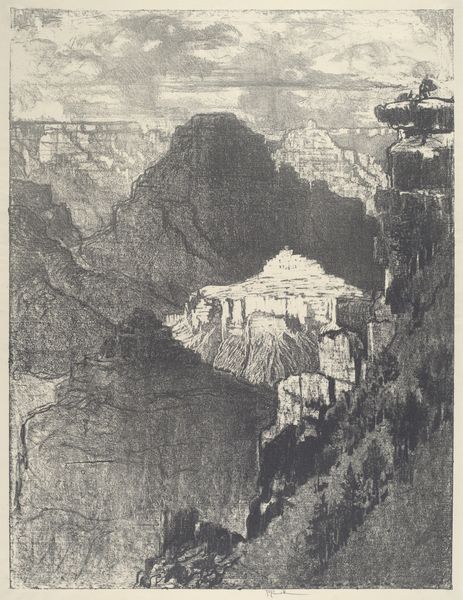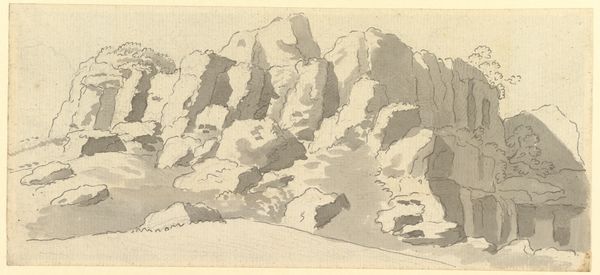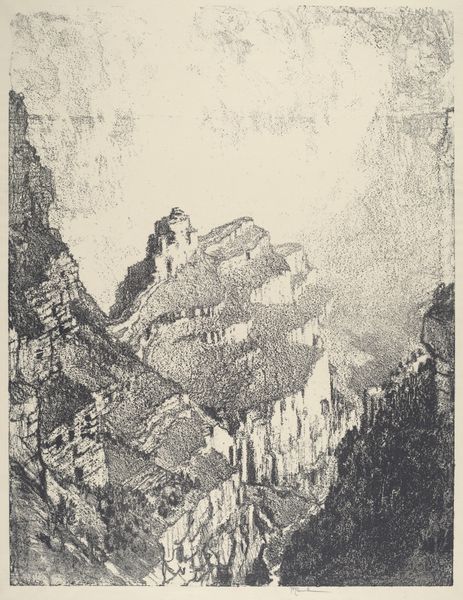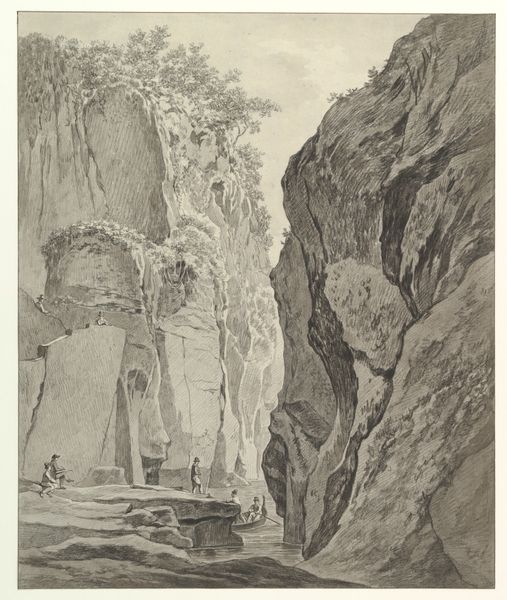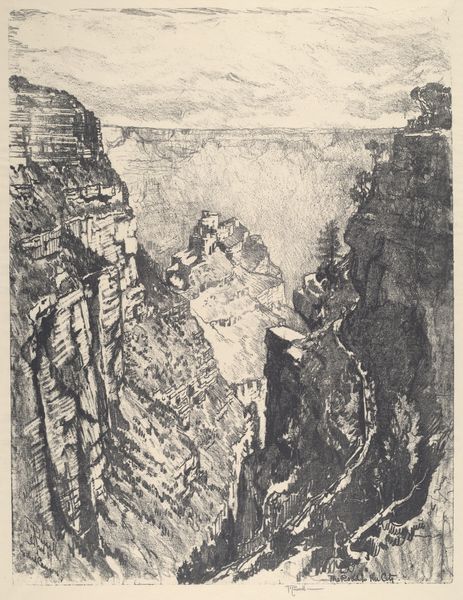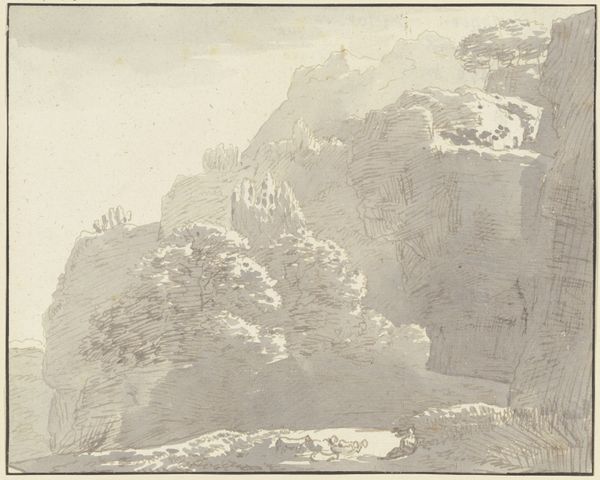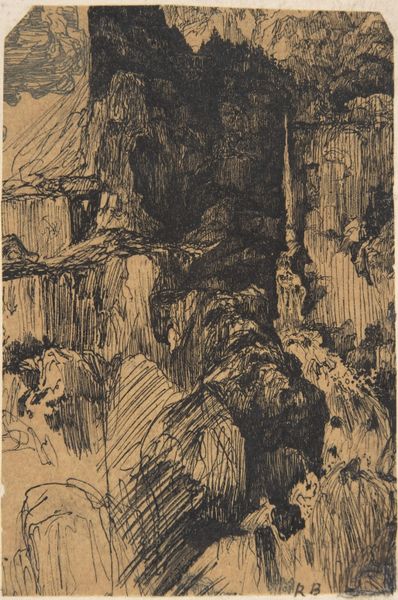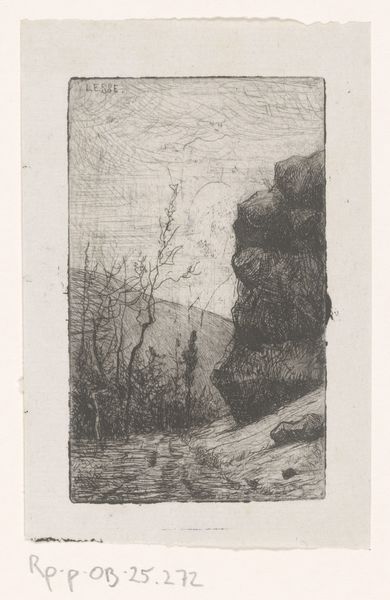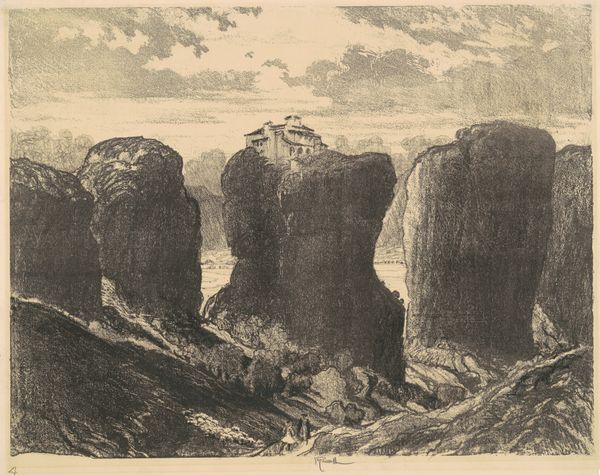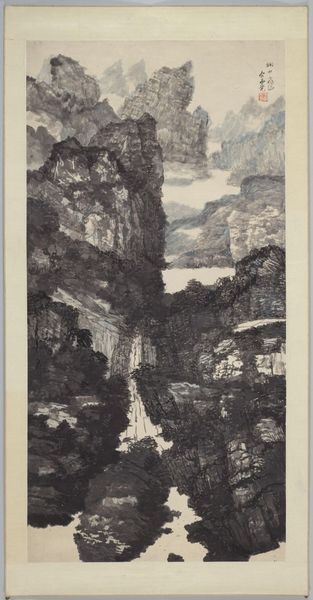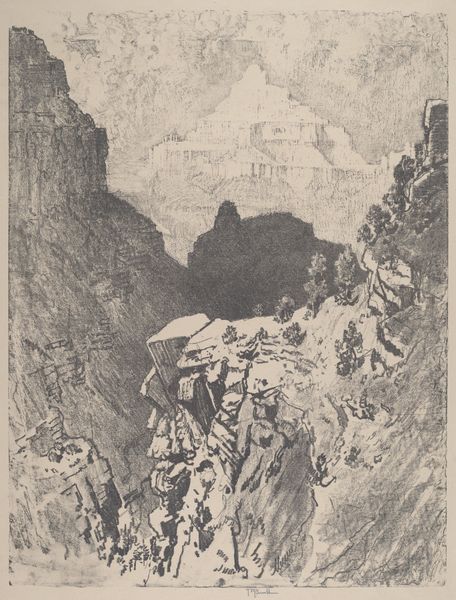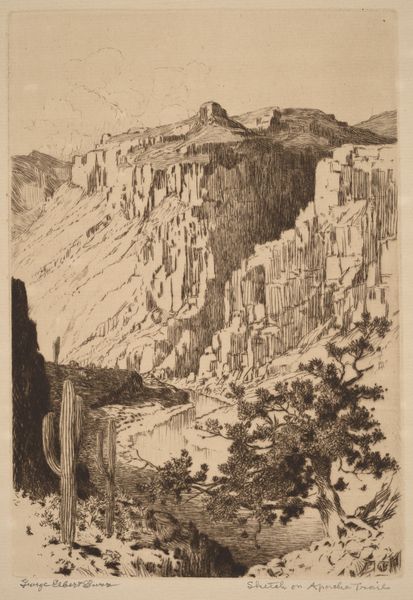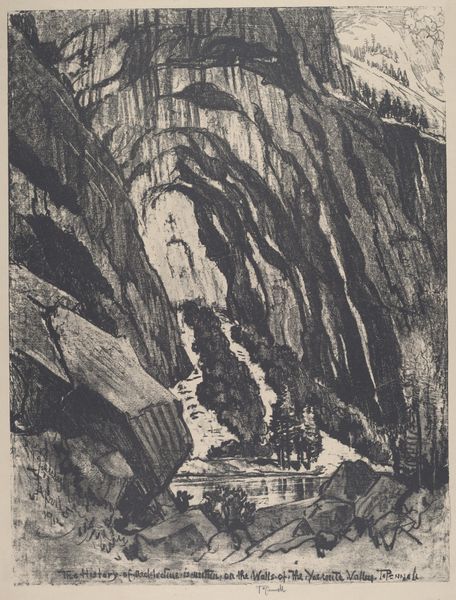
Copyright: National Gallery of Art: CC0 1.0
Editor: Here we have Joseph Pennell's "Mists in the Canyon, No. II" from 1912. It’s a print, predominantly created with pencil, giving it a very ethereal quality. It almost feels like a faded memory. What catches your eye when you look at this work? Curator: I'm particularly interested in the artist's choice of medium and the processes employed to create this print. A pencil sketch, seemingly so immediate and direct, translated into a printed form raises interesting questions about reproduction, accessibility, and the artist’s intention. What type of paper was chosen? Editor: Good question. Knowing more about the printmaking process here would definitely shed more light on Pennell’s choices. Curator: Exactly. Consider also the social context: prints made art more accessible to a wider audience. Was this a conscious decision by Pennell to democratize the experience of viewing the Grand Canyon, moving it away from the exclusive domain of the wealthy traveler? Editor: That's a compelling point. It positions the artwork within a larger narrative of art production and consumption. How does that reading influence how we see the imagery itself? Curator: It forces us to see beyond the romantic landscape. The “mist” becomes not just a visual effect, but perhaps a metaphor for obscuring labor. The work asks to be understood not as pure aesthetic experience, but as the result of materials, labor, and systems of distribution. Are we considering this through an imperialist lens of the colonisation of indigenous lands? Editor: I hadn't thought about that at all, but it changes how I see everything from the stark contrast in foreground and background, to the title. Thank you for making that connection. Curator: Understanding the artwork’s physical creation, and the means of its circulation can be as insightful as analyzing its form. It helps move toward broader understanding.
Comments
No comments
Be the first to comment and join the conversation on the ultimate creative platform.
